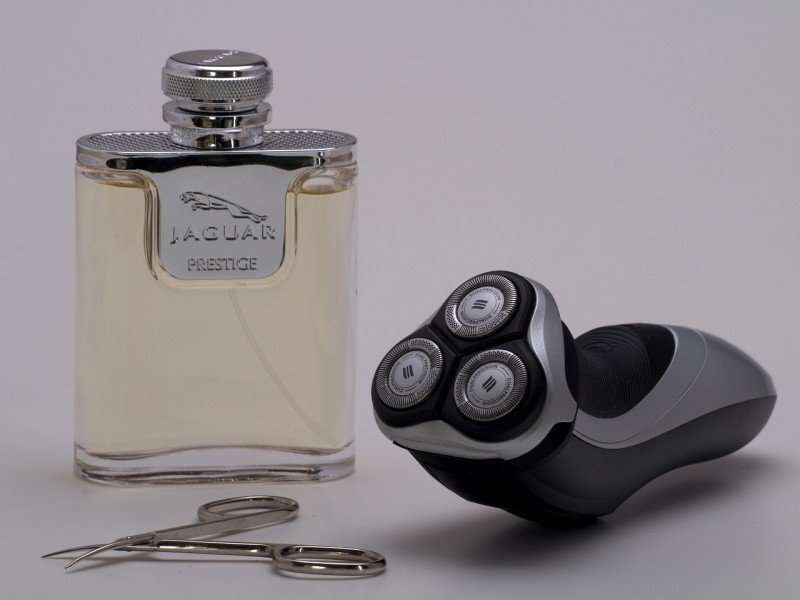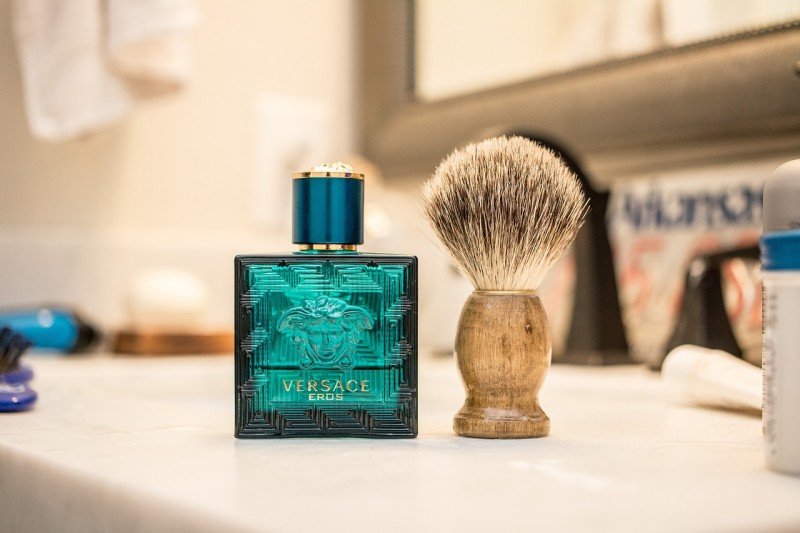A razor is not just a simple tool; it's a perfect example of meticulous craftsmanship.
In this article, we'll scrutinize the science of razor blade technology, understand the dynamics of shaving, and compare the distinct design features that set safety and electric razors apart from each other.
We will also discuss the importance of regular razor maintenance in maintaining its performance.
So, let's understand the sophisticated intricacies embedded in the common routine of shaving.
Key Takeaways
- Razor blades are made of materials like stainless steel or carbon steel, which affect sharpness and durability.
- The mechanics of shaving involve the interaction between razor blade technology and the skin, with prepping the skin and using shaving cream playing important roles.
- The design elements of razors include ergonomic handles, rubber coatings, and optimal integration of handle ergonomics and blade materials.
- Razors can be operated through safety razors with blade shields and precise blade angles or electric razors with foil or rotary mechanisms, providing a practical and safer alternative to traditional shaving.
Understanding Razor Blade Technology
Grasping the inner workings of razor blade technology can offer insight into the effectiveness of a razor. A significant factor influencing a razor's sharpness and longevity is the material of the blade. Manufacturers often opt for either stainless steel or carbon steel, each with distinct advantages.
Blades made from stainless steel are known for their durability and rust resistance. In contrast, carbon steel blades are favoured for their sharper edge, perfect for those seeking a close shave.
The term 'shaving ergonomics' pertains to the razor's design. A well-designed razor is easy to hold and use and reduces physical discomfort for the user. Its design should facilitate a smooth glide across the skin, minimizing the chances of skin injuries and improving the overall shaving experience.
Mechanics of Shaving
The art of shaving is deeply connected to the delicate balance between the razor blade technology and its interaction with our skin. To comprehend this, one should ponder the razor's design and how it interacts with our skin's unique landscape during a shave.
In this section, we will break down the science behind this daily ritual, helping you grasp why it works as effectively as it does.
In the words of a seasoned barber, 'Understanding the mechanics of shaving isn't just about the tools. It's about knowing your skin and how it interacts with the blade.'
Razor Blade Technology
Comprehending the art of shaving involves understanding the complex technology behind each razor blade, which is pivotal in the shaving process. The technology behind today's razor blades is a precise mix of engineering marvels and materials science, where blade sharpness and material composition play key roles.
To ensure an easy cut through hair, manufacturers fine-tune the sharpness of blades through meticulous grinding and honing processes. The choice of material used in the blade, usually stainless steel or carbon steel, is selected based on its hardness, durability, and resistance to corrosion.
Chromium or ceramic coatings are sometimes applied to blades to extend their lifespan. This careful balance of razor sharpness and robust material composition gives today's razors superior performance.
Shaving Process Explained
The art of shaving involves an in-depth understanding of the interaction between cutting-edge razor technology and human skin and hair. It all begins with prepping the skin, a process that involves cleaning and softening it to decrease friction and hence, reduce the chances of irritation or injury.
The role of shaving cream is of great significance here due to its ability to provide a protective layer over the skin, ensuring the razor slides effortlessly. Additionally, the cream retains heat, which helps in softening the hair, making it less resistant to the razor's cut.
With its series of ultra-thin, sharp blades, the razor is then angled against the skin to cut through the hair shafts at the skin's surface, delivering a smooth, hairless finish.
'Shaving is not just about removing hair, it's about taking care of your skin, and every step in the process plays a significant role.'
Design Elements of Razors
Various key design attributes determine the effectiveness and performance of a razor. The ergonomics of the handle and the materials used in the blade stand out as the most fundamental elements. Precision in the design of the handle is critical, as it ensures a comfortable and secure grip, reducing the likelihood of the razor slipping during use. The type of material used in the blade holds significant weight too, as it dictates the sharpness and durability of the razor.
Below is a brief overview of these key design attributes:
| Key Design Attribute | Why It Matters | Illustrations |
|---|---|---|
| Ergonomics of the Handle | Promotes a secure and comfortable grip | Handles with rubber coating, anatomically shaped handles |
| Materials used in the Blade | Defines the sharpness and durability of the razor | Blades made from stainless steel, blades made from carbon steel |
An optimally designed razor seamlessly integrates these attributes, resulting in an effective and safe shaving experience. Familiarity with these attributes can guide consumers in making knowledgeable decisions when buying razors.
Operation of Safety Razors
Safety razors, constructed with a shield-like component that sits between the blade's edge and the skin, function based on an easy yet effective concept. They work by precisely adjusting blade angles to deliver a neat, close shave without inflicting harm. Additionally, the longevity of the razor guarantees a seamless slide on the skin and preserves sharpness even after repeated use.
The design of a safety razor is such that it minimizes blade exposure. This feature helps in controlling the blade angles and, therefore decreases the likelihood of getting nicked. The angle of cutting, typically in the range of 30 to 45 degrees, is finely tuned to snip hair at the skin level, avoiding any skin damage.
The razor's durability is a result of high-grade materials and robust build, enabling the gadget to endure multiple uses while preserving its performance and efficacy and understanding how a safety razor works aids in maximizing its use and extending its lifespan.
Functioning of Electric Razors
Electric razors, the successors to safety razors, are marvels of modern technology designed to offer a practical and effective shaving solution. These tools are a testament to the innovations in electric razor technology, intended to upgrade shaving time efficiency and lower the chance of getting cuts or scratches.
To grasp how they work, ponder over these main points:
-
Electric razors come with a slim metal foil that covers the blades. This foil raises and trims hair without the blades directly touching the skin.
-
Such razors function on either a rotary or foil mechanism. Both systems include multiple blades that vibrate at high frequencies to cut hair effectively.
-
Typically, these razors draw power from rechargeable batteries, which allows for cordless operation and easy transport.
This technological advancement provides an up-to-date, effective, and safer alternative to old-fashioned shaving techniques.
Importance of Razor Maintenance
Moving on to the subject of razor upkeep, it's worth noting that the effectiveness and durability of both safety and electric razors are highly dependent on regular cleaning and correct care. The relevance of blade sharpness cannot be understated, as it directly impacts the quality of your shave. Routine care ensures that the blade stays sharp and performs well, helping to avoid skin irritation and uneven cuts. Here, the importance of maintenance tools comes to the forefront, with items like blade oils and cleaning brushes playing a key role in sustaining the razor's performance.
| Aspect of Maintenance | Importance | Suggested Tools |
|---|---|---|
| Cleaning the Blade | Helps keep blade sharp, avoids buildup | Cleaning brush, warm water |
| Oiling the Blade | Reduces friction, keeps blade smooth | Blade oil |
| Regular Checks | Helps detect wear or damage early | Magnifying glass, light |
| Proper Storage | Prolongs life, avoids damage | Razor stand, protective case |
As a custom quote, consider this: "The key to a great shave is not just the razor, but how you maintain it." This emphasizes the importance of routine razor maintenance in achieving a satisfying and smooth shave.
Our Final Thoughts
Wrapping things up, the functionality of a razor, whether it's a safety or electric type, is a mix of detailed technical engineering paired with attractive design.
The key role of the razor is to cut hair as close as possible to the skin. This is achieved through the combination of a finely honed blade and its angle, paired with the person's shaving technique.
Keeping your razor in good condition plays a big role in its lifespan and performance, highlighting the need to familiarize yourself with this everyday tool's operation.


